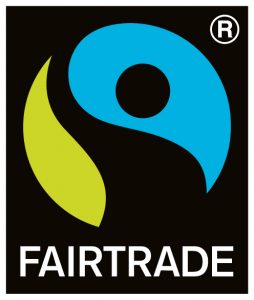Chapter 3 – Organizations
“Never doubt that a small group of thoughtful, committed citizens can change the world; indeed, it’s the only thing that ever has.” (Margaret Mead)
“Society does not consist of individuals, but expresses the sum of interrelations, the relations within which these individuals stand.” (Karl Marx)
Learning Objectives
In this chapter you will accomplish the following learning objectives:
- You will understand some of the theoretical principles underlying responsible management (RM) and corporate social responsibility (CSR)
- You will integrate organizational forms and the role of governance in promoting RM and CSR
Example: Progression Of Community Forest Agreements in British Columbia Through Social And Political Pathways
This conservation resource was created by Arlo Bryn-Thorn. It is shared under a CC-BY 4.0 International License.
Society has organized into groups, clans, and clusters of people since time immemorial. It is a fundamental assumption that people want to belong to organizations. It is wired into our genetics (1). It follows that these organizations can sometimes have conflicting interests, that each feel are worthwhile. The mutual accommodation of these interests can be read in the example above that led to the British Columbia’s Community Forest Agreement.
It is no surprise that organizations of people clustered together to pursue common business interests. Adam Smith in his Wealth of Nations addressed many philosophical issues relating to the creation of firms and their responsibility to their workers and to society. Some consider Adam Smith to be at the forefront of social responsibility and even the forerunner of corporate social responsibility (CSR) (2).
The emergence of the industrial revolution also revolutionized the way people joined and created businesses and firms. The increased wealth of people and firms and their search for resources to supply a consumer market led to the colonization efforts of Western powers in different continents to the detriment and interruption of indigenous societies in the Americas, Asia, and Africa (3).
It is worth reflecting on the presence of ancestral and indigenous societies that had different value systems. These indigenous groups were enslaved, integrated, separated, and isolated to various levels and in various reserves in many parts of the world by colonizing groups at different stages of history. Only recently has an increased awareness of these historical situations been recognized and reconciled to varying degree (for a fuller discussion of the Truth and Reconciliation process in Canada read (4)). Figure 1 illustrates indigenous regions in the Americas as an example of pre-established grouping of societies. You can get several layers of analysis by accessing https://native-land.ca .

Academic researchers have explored the organizational forms that societies have adopted and proposed a variety of theories relating to the behaviour of those organizations and the individuals who are engaged with the organizations. The industrial revolution and its visible output as shown in Figure 2 has expanded the number of ways that people organize. Theories abound to the way that organizations form and behave and in light of responsible management, researchers continue to explore reasons, mechanisms, and linkages between complex internal and external variables that lead to a firm behaving in one way – ethically and another behaving in a reprehensible way (5).

One of those theories focused on the organizational level of analysis is institutional theory as initially proposed by Meyers (6) and further developed by DiMaggio and Powell (7). This theory suggests that organizations – and in the context of responsible management, firms and businesses behave according to isomorphic constraints. That is organizations tend to behave and organize in similar ways due to societal pressures along mimetic, coercive, and normative dimensions.
Mimetic isomorphism refers to the process where organizations mimic others that are considered to be succesful or have accumulated social legitimacy. As an example from the field of sustainability, organizations that lead with sustainability initiatives such as Unilever are often held as benchmarks for other organizations to follow. Politically and socially, organizational levers such as certifications by B-Lab Corporation and LEED signal high standards of sustainability whilst incorporating as a Benefit corporation in the US, as a Community Interest Company (CIC) in some European countries or a Community Contribution Company (CCC) in British Columbia similarly denote a legal commitment to sustainability along the dimensions of responsible management.
Coercive isomorphism explains how organizations will be constrained usually by political actors through rules and laws to organize or behave in a particular manner. For example, the Canadian government provides extensive guidelines on doing business abroad based on respecting Canadian regulations and international regulations (3). Local rules and regulations (standards) for operating safely, sustainably in various industries and for various stakeholders are coordinated through the Standards Council of Canada through agencies such as the CSA group who provides standards that are often implemented into laws governing safety and uses of tools and materials. These political and regulatory constraints force organizations to create managing and reporting mechanisms to ensure legal legitimacy. Similar situations exist internationally within the constraints of their cultural and political systems.
Normative isomorphism describes how organizations will tend to organize similarly due to norms and rules imposed by professions; for example see the Chartered Professional Accountants (CPA) (see the Sustainability Accounting Standards Board logo in Figure 4) or Professional Engineering associations (coordinated in Canada by Engineers Canada) or other professional associations. Voluntary standards such as ISO 26000 (a global standard for corporate social responsibility) or specific norms such as Fairtrade Canada (enhancing social responsibility through fair trade of raw material – its logo is shown in Figure 3) and many others provide the opportunity for firms to organize in a way that benefits their own success and essentially mimic each other as a success strategy.
Firms however, need to function within the accepted boundaries of society. This is where one dimension of institutional theory explains that concerns with reaching legitimacy via conforming to implied or explicit rules assures the organization of survival in its macro-environment. Organizations can use signaling theory to reduce the information asymmetry with its stakeholders through its online presence, through an announcement of its initiatives, through formalized commitments or compliance to socially accepted norms. For example, there is a plethora or symbols, icons, and designations indicating conformance to various product requirements that add social legitimacy to coroporations. This becomes a potentially risky strategy if stakeholders perceive the firms to be ‘greenwashing’ (falsely rating) their claims.


Individuals over history, embraced various grouping concepts in order to survive in society and so organizational forms evolved to address a variety of needs. For-profit firms as the economic engines of modern Western society provide the scalability to address profit-seeking opportunities. Organized isomorphically, they address needs along the raw material extraction, agrarian cultivation, industrial processing and production of goods and services that address human material needs.
For-profit firms, range from small to medium sized enterprises (SMEs) to large firms that may be multinational (MNCs) or global in scope and structure. Variations exist along various combination of state-owned and partially state-owned entreprises depending on the local political state of a nation (8).
Not-for-profit firms can range from cooperatives, through community enterprises, through private social enterprises and social entrepreneurship, non-governmental (NGOs) bodies, and other social ventures (9). They are mostly organized to address needs not otherwise addressed by government structures or through private enterprises. Their funding can result from for-profit enterprise philanthropy, community or crowd-funding, private funding, or government grants or loans.
Governments are socially constructed organizations of people grouped and assembled according to various electoral or appointed mechanisms to address the governance, infrastructure needs, and defence of their population. Governance and policy is then administered through assemblies of people (elected or not depending on the political context). In Canada, the some of the levels of government groups are the rural councils, town councils, city administration, provincial governments, and the federal government. Beyond the federal government supra-national coalitions such as the United Nations (see Figure 5), the North American Treaty Organization, and internationally, the World Treaty Organization (WTO), the European Union (EU), Mercosur, the ASEAN group, and other regional coalitions exist (10).

Additional literature can be found and is described in the ‘key take-aways’ section relating to the econimically disadvantaged part of the global population that is often considered the base of the pyramid (BOP). Since the initial concepts of the BOP model however, increasing affluence has changed this pyramid into a quadrilateral with a significant middle class but with economic disparities and inequalities still an issue from the global context (11).
Responsible management in organizations of all sorts and at all levels does not happen without the intervention of managers which then brings in agency theory (12), stakeholder theory (13), and managerial and governance frameworks which will be discussed in the next chapter.
Key Takeaways
Your key takeaways may be:
- that organizations try to be the same (isomorphism) for a variety of internal and external reasons and so responsible management is important to maintain a focus on sustainability and CSR throughout;
- that infrastructures exist with different types of organization that have a common goal of promoting responsible management.
Reflective Questions
Take some time to reflect on how you would answer the following questions:
- When addressing the social, economic, environmental well-being of societies, why is it necessary to consider colonization and reconciliation efforts at the same time?
- Reflect on the fundamental objectives of different organizational forms – for-profit firms, not for profit social enterprises, governmental bodies? How are they similar or different?
- Explain who are the internal and external stakeholders for an organization? Does it change if the organization’s objective is business or social enterprise?
- In for-profit firms, individuals join this organizational form towards capitalistic end results of making a profit. Explain how you would explain to an executive of this organization how this objective could encompass a social or environmental motive in addition to the profit motive.
- How did the industrial revolution, in part, lead to colonization by Western powers? Do you believe that this inevitably led to a split between the profit motive and the social or environmental motive?
- The UN SDGs were previously discussed; explain how coalitions such as the UN play a role in addressing societal needs, and forming societal aspirations. Do you see them as effective? Why or why not?
References used in the text – you are encouraged to consult these references through your institutional library services or through the internet
(1) Baumeister, R. F., & Leary, M. R. (1995). The need to belong: Desire for interpersonal attachments as a fundamental human motivation. Psychological Bulletin, 117, 497–529.
(2) Smith, Adam An Inquiry into the Nature and Causes of the Wealth of Nations. Edited by S.M. Soares. MetaLibri Digital Library, 29th May 2007
(4) TRC (2012). Truth and Reconciliation Commission of Canada: Calls to Action. Retrieved from https://nctr.ca/records/reports/#trc-reports
(5) Lange, G., Wodon, Q., & Carey, K. (2018). The Changing Wealth of Nations 2018: Building a Sustainable Future. Washington, DC: World Bank. Retrieved from https://openknowledge.worldbank.org/handle/10986/29001 License: CC BY 3.0 IGO.
(6) Meyer, J. W., & Rowan, B. (1977). Institutionalized organizations: Formal structure as myth and ceremony. American journal of sociology, 83(2), 340-363.
(7) Powell, W. W., & DiMaggio, P. (Eds.) (1991). The New Institutionalism in Organizational Analysis. University of Chicago Press. http://catdir.loc.gov/catdir/toc/uchi051/91009999.html
(8) Read Chapter 1 (pp. 1-19) in Sexty, R. W. (2020). Canadian Business and Society: Ethics, Responsibilities and Sustainability (5th Ed.). McGraw Hill.
(9) Read Chapter 16.3 (pp. 309-312) in Sexty, R. W. (2020). Canadian Business and Society: Ethics, Responsibilities and Sustainability (5th Ed.). McGraw Hill.
(10) Lists of organizations are dynamic but one site that provides a consolidated list is https://www.safalta.com/blog/international-organization-and-their-headquarters . Retrieved July 19, 2022.
(11) Lange, G. M., Wodon, Q., & Carey, K. (Eds.). (2018). The changing wealth of nations 2018: Building a sustainable future. World Bank Publications.
(12) Jensen, M. C., & Meckling, W. H. (1976). Theory of the firm: Managerial behavior, agency costs and ownership structure. Journal of financial economics, 3(4), 305-360.
(13) Freeman, R. E. (1984). Strategic management : a stakeholder approach. Pitman.

